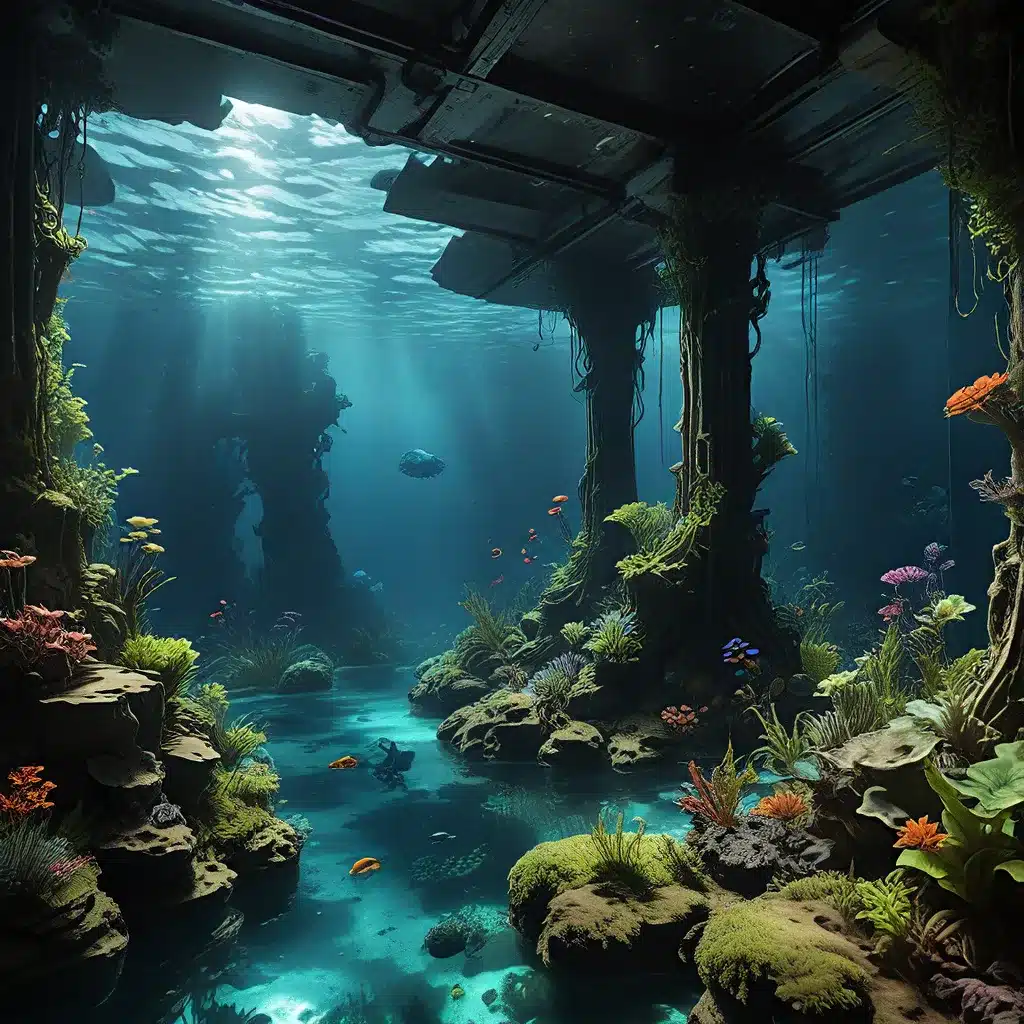
Unlocking the Secrets of Aquarium Ecosystems
Aquariums are captivating windows into the underwater world, offering a glimpse into the intricate and often mesmerizing lives of aquatic species. From vibrant tropical fish to lush aquatic plant communities, these liquid landscapes have the power to transport us to another realm, one that is both serene and teeming with life. As aquarists, we have the privilege of curating and maintaining these miniature ecosystems, a responsibility that requires a deep understanding of the delicate balance that underpins a thriving aquarium.
In this comprehensive guide, we will delve into the art and science of aquarium design, exploring species-specific care, innovative aquascaping techniques, and the importance of effective water management. Whether you’re a seasoned hobbyist or a newcomer to the aquarium hobby, this article will equip you with the knowledge and expertise to create breathtaking, immersive underwater habitats that will captivate and inspire.
Designing for Species-Specific Needs
The foundation of a successful aquarium lies in understanding the unique requirements of the inhabitants. Each fish, invertebrate, and aquatic plant has its own set of environmental preferences, dietary needs, and behavioral traits that must be meticulously considered in the planning and maintenance of the aquarium.
When selecting species for your aquarium, it’s crucial to research their native habitats, water parameters, and social dynamics. King Aquarium offers a wealth of information on a wide range of aquarium inhabitants, including detailed care guides and compatibility charts to help you make informed decisions.
For example, let’s consider the captivating Cardinal Tetra (Paracheirodon axelrodi). Originating from the blackwater streams of the Amazon basin, these vibrant fish thrive in soft, acidic water with a pH range of 5.0 to 6.5. They are schooling fish, so a group of at least six individuals is recommended to promote natural behaviors and reduce stress. Providing ample hiding places, such as dense planting or driftwood, can also contribute to their overall well-being.
In contrast, the elegant Koi (Cyprinus rubrofuscus) require a larger, pond-like aquarium or outdoor water feature to accommodate their impressive size and active nature. Koi are sensitive to water quality and require a robust filtration system, along with regular water changes to maintain optimal water parameters. Incorporating a variety of aquatic plants can also help to oxygenate the water and provide visual interest for these magnificent fish.
By tailoring your aquarium’s design to the specific needs of its inhabitants, you can create a harmonious and thriving environment that allows your aquatic companions to thrive.
The Art of Aquascaping
Aquascaping, the art of designing and arranging the underwater landscape, is a captivating aspect of the aquarium hobby. Beyond simply keeping fish and plants alive, aquascaping allows us to craft visually stunning, immersive scenes that transport the viewer to a lush, underwater world.
One of the fundamental principles of aquascaping is the use of the Golden Ratio, a mathematical principle found in nature that creates a sense of balance and harmony. By applying this ratio to the placement of rocks, driftwood, and plants, aquascapers can achieve a visually appealing and natural-looking layout.
Another key element in aquascaping is the use of focal points and negative space. Focal points, such as a prominent piece of driftwood or a vibrant plant, draw the eye and create a sense of depth and visual interest. Negative space, the areas of open water or sand, provide a sense of balance and allow the viewer to appreciate the overall composition.
Innovative aquascaping techniques, such as the iwagumi style, the Dutch style, and the nature aquarium style, each offer unique approaches to creating captivating underwater landscapes. These styles differ in their use of hardscapes, plant selection, and overall aesthetic, allowing aquarists to experiment and find the approach that best suits their personal preferences and the needs of their aquarium inhabitants.
Maintaining Water Quality and Balance
Arguably the most crucial aspect of aquarium keeping is the management of water quality. A well-balanced aquarium ecosystem requires a delicate interplay between fish, plants, and beneficial bacteria to maintain optimal water parameters and ensure the long-term health and vitality of the entire system.
One of the key principles in water management is the nitrogen cycle, a natural process in which toxic ammonia and nitrites are converted into less harmful nitrates by beneficial bacteria. Establishing and maintaining this cycle is essential for the well-being of your aquarium inhabitants, and it can be achieved through the implementation of high-quality filtration systems, regular water changes, and the introduction of appropriate live plants.
In addition to the nitrogen cycle, aquarists must also consider other water parameters, such as pH, temperature, and dissolved oxygen levels. These factors can have a significant impact on the overall health and behavior of the aquarium’s inhabitants, and they must be closely monitored and adjusted as needed.
By prioritizing water quality and maintaining a balanced ecosystem, you can create a thriving aquarium that provides a stunning and sustainable environment for your aquatic companions to thrive.
Embracing the Aquarium Hobby
Aquarium keeping is a captivating and rewarding hobby that allows us to connect with the natural world in a truly immersive way. From the vibrant colors of tropical fish to the serene beauty of aquatic plant life, the aquarium presents a unique opportunity to curate and maintain miniature ecosystems that captivate and inspire.
As you embark on your aquarium journey, remember to approach it with a spirit of curiosity, patience, and a deep appreciation for the delicate balance that underpins a thriving underwater habitat. By tailoring your aquarium to the specific needs of its inhabitants, mastering the art of aquascaping, and diligently maintaining water quality, you can create a liquid landscape that not only delights the senses but also fosters a deeper connection with the natural world.
So, dive in, explore, and let your aquarium become a gateway to a realm of wonder and discovery. The possibilities are truly limitless when you embrace the art of aquarium keeping.

